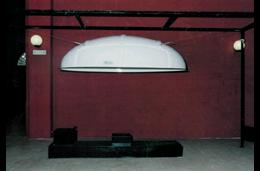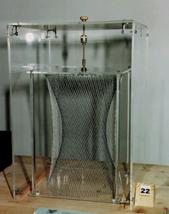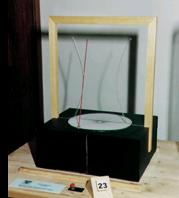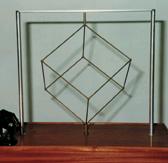- Straight lines and circles
- Conic sections
- Other curves
|
|

|
In fact, burning mirrors and the mirage are made not
with parabolas, but with surfaces obtained rotating
parabolas around their axis. These surfaces are called
rotation paraboloids. A paraboloid can be obtained
rotating a liquid fast enough inside a cylindrical
container. If instead the liquid is contained between two
close planes, we have a parabola.
Similarly, when we
rotate an ellipse or a hyperbole, we obtain a rotation
ellissoid or hyperboloid.
|

|
These surfaces also have reflecting properties
similar to the ones of the paraboloid. We have built an
elliptical chamber, obtained by rotating a half-ellipse
along the axis. A phenomenon similar to the burning
mirror happens in it: if we place ourselves in one of the
foci and we speak towards the elliptical wall, even in a
very low voice, those who are in the other focus receives
the voice very clearly, while whoever is in between hears
hardly anything.
|

|
The rotation hyperboloid has the notable
characteristic of being a lined surface, that is of being
constituted only of straight lines, as we can see from
the hyperboloid obtained with strings.
|

|
This produces an unexpected phenomenon: rotating a
straight line opportunely inclined, one can make it go
through a hyperbole-shaped slit. The rod, rotating,
describes a hyperboloid, which, intersected with a plane,
leaves us with the two slits through which the rod passes
with no difficulty.
|


|
The same surface is obtained by rotating a cube.
While the upper and lower edges, that meet the rotation
axis, form a cone, the intermediate ones, which do not
meet the axis, generate a hyperboloid, which is visible
thanks to the persistence of images on the retina.
|
|
|